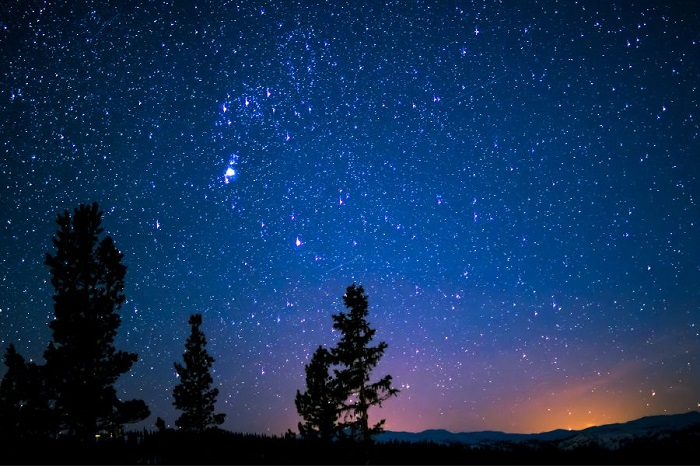The night sky, with its tapestry of twinkling stars, has always captivated humanity’s imagination. From ancient civilizations to modern science fiction, the stars have been a source of wonder, inspiration, and aspiration. The phrase “Dream of Stars” encapsulates the innate human desire to explore the unknown, to push boundaries, and to reach for the stars, both literally and metaphorically.

A Historical Glimpse
Throughout history, cultures around the world have woven myths, stories, and beliefs around the stars. The stars guided navigation, marked the passage of time, and inspired the creation of constellations. Ancient astronomers like Ptolemy and Galileo laid the foundation for our understanding of the cosmos, igniting the spark of curiosity that would eventually lead to humanity’s ventures beyond Earth.
The Cosmic Curiosity
Dreaming of stars is not confined to astronomers or scientists. It’s a universal dream that transcends disciplines. Artists, poets, philosophers, and thinkers of all kinds have contemplated the stars as a source of inspiration. Vincent van Gogh’s iconic painting “Starry Night” is a testament to the emotional power stars hold. Poets like Robert Frost have likened the stars to “fireflies in a fairyland.” There’s a sense of unattainable yet irresistible allure in the way these distant luminaries beckon to us.
Scientific Exploration and Discovery
The dream of stars isn’t just confined to metaphorical ponderings; it has manifested in the form of groundbreaking scientific achievements. The Space Age, which began with the launch of Sputnik in 1957, marked a pivotal moment in human history. Suddenly, the dream of reaching the stars wasn’t just a dream anymore; it was becoming a reality. The Apollo moon landings captured the collective imagination of the world, proving that seemingly impossible feats are achievable with determination and innovation.
Since then, robotic probes have visited other planets and their moons, capturing breathtaking images and invaluable data. Telescopes like the Hubble Space Telescope have peered deep into the cosmos, revealing galaxies, nebulae, and phenomena that were previously unimaginable. The recent advancements in space exploration by both government agencies and private companies have rekindled the dream of stars, pushing us closer to realizing our cosmic aspirations.
The Human Spirit of Exploration
What drives us to dream of stars? Is it the allure of the unknown, the thrill of discovery, or the simple human instinct to explore? Perhaps it’s a combination of all these factors. The same spirit of exploration that led ancient sailors to venture across uncharted seas and modern adventurers to climb the highest peaks is what propels us toward the stars.
There’s a profound connection between the desire to explore outer space and the inherent curiosity within us. From childhood, we gaze up at the night sky, imagining ourselves as astronauts or interstellar travelers. This innate curiosity, coupled with technological advancements, has enabled us to turn those childhood dreams into reality.
Challenges and Triumphs
Dreaming of stars isn’t without its challenges. The vastness of space, the harsh environments of other planets, and the distances involved present formidable obstacles. Yet, throughout history, humanity has shown a remarkable ability to overcome challenges through innovation and perseverance.
The dream of stars has also been a catalyst for technological innovation that extends far beyond space exploration. Technologies developed for space missions, such as satellite communications and medical advancements, have transformed various aspects of our daily lives, often in ways we might not even be aware of.
Inspiring Future Generations
As we continue to explore the cosmos and make strides toward realizing our dreams of stars, it’s crucial to remember the impact of these endeavors on future generations. The dreams we nurture today will become the realities of tomorrow. Inspiring young minds to look to the skies, to question, and to dream will shape the future of space exploration and beyond.
Educational initiatives, outreach programs, and the portrayal of space exploration in popular culture all contribute to fostering this sense of wonder and curiosity. Encouraging STEM (Science, Technology, Engineering, and Mathematics) education equips young people with the skills they need to contribute to the ongoing journey toward the stars.
In Conclusion
“Dream of Stars” is more than a mere phrase; it’s a reflection of human potential, curiosity, and the unyielding spirit of exploration. Whether through artistic expression, scientific achievement, or technological innovation, the stars continue to guide us toward new horizons. As we gaze into the night sky, we are reminded that the dream of stars lives within us all, waiting to be awakened and pursued, inspiring generations to come.

Hello, and a heartfelt welcome to all dreamers and seekers of spiritual insight. I am Isabella Riversong, a dedicated Sleep Technologist, Dream Enthusiast, and an ardent believer in the transformative power of dreams. My journey in the realm of sleep and dreams has been a profound and enlightening one, and I am thrilled to share this world of infinite possibilities with you. More

